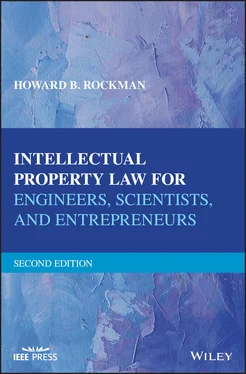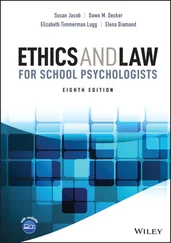This provision of the Patent Law also prevents a person who merely recognizes the commercial merits of an existing product, or who discovers the product in an ancient document, in the U.S. or a foreign country, or from another pre‐existing source, from properly obtaining a U.S. patent, since patents in the United States are granted only to “an inventor.” The activities of others who may have publicly disclosed the same invention as yours, without necessarily obtaining any patent protection for that invention, may defeat your right to a patent if those activities occurred prior to your patent application filing date.
A further provision of the Patent Law, which was touched upon previously, prohibits an inventor from obtaining a patent if the invention (1) was patented or described in a printed publication in this or a foreign country by the inventor, or (2) was in public use, on sale, offered for sale, or publicly available anywhere more than one year prior to the date of the filing of the application for patent in the United States as a result of actions of the inventor. This is a very important provision, and controls the time in which patent protection must be applied for, or patent protection is lost. This is the provision that includes the U.S. “grace period” requiring that a patent application be filed within one year from the date of first public disclosure or publication anywhere of the invention. The purpose of this provision is to require inventors to make a prompt decision regarding filing a patent application, so that the public will obtain the benefit of the inventor’s work upon expiration of the patent that much earlier. One who suppresses, abandons‚ or conceals their invention is not entitled to patent protection.
Under this provision of the Patent Law, the activities of the inventor or inventors themselves, as well as the activities of others‚ may defeat rights to patents. For example, if one completes an invention, and then publishes a paper or delivers a speech that is later furnished to members of the audience in paper or electronic form, such as a paper or speech delivered to a professional or a trade group, that inventor then has one year from the time of that publication or disclosure to file a U.S. patent application. Therefore, it is imperative that inventors consider the patentability of their inventions during that first year period, or face the loss of all patent protection.
It is also important to note what was briefly discussed previously about avoiding the loss of foreign patent rights. If at all possible, it is highly recommended to seek the advice of a patent professional prior to any public disclosure of any invention, so that foreign patent rights will not be lost. In today’s global economy, I cannot think of one invention that would have use solely in the United States, and not be potentially marketable in other countries throughout the world in one form or another.
If during the development of your invention, it becomes necessary to disclose the invention outside your company, or outside the group of inventors working on the invention, such disclosure should be made only after a confidential non‐disclosure agreement has been signed by the recipient party to whom the disclosure is being made. The non‐disclosure agreement should state, among other things, that the recipient party will not use the disclosed information for its own benefit, nor disclose the subject matter of your invention to anyone else, without your prior written consent. In addition, all information and physical devices given to the recipient party relating to the invention should be clearly and boldly marked CONFIDENTIAL. This will establish later, if necessary, that the disclosure of the invention to the recipient party was confidential, and was not a “public” disclosure under the Patent Laws. Taking these steps, therefore, allows you to privately disclose your invention to another, without starting the one‐year clock from running under the U.S. Patent Law, and will also simultaneously save a majority of your foreign patent rights from extinction.
For more information on the provisions in a typical Confidential Non‐Disclosure Agreement, see Chapter 21of this text.
Public use of an invention that can be proven to be an experimental use is not considered a prior public use when applying the requirement that an application must be filed within one year from public use. However, it is important to realize that in litigation against an adversary party, any disclosure which you may have considered experimental may ultimately be held by a court or a jury to be proven as a public use. In one instance I can recall, a conversation on a bus traveling between a hotel and a convention center during a trade show, where the inventor disclosed some of the ideas of his invention to someone on the bus, constituted a public disclosure. Therefore, it is important to note that if any public comments or disclosures are made about an invention, the inventor should be aware of what can and what cannot be done with regard to protecting patent rights in the United States and throughout the world. Appropriate non‐disclosure agreements should be used to cloak invention disclosures, at all times when possible, to prevent a disclosure from being “public.”
5.1.3 Prior Publications, U.S. and Foreign, as Prior Art
In the U.S. Patent and Trademark Office, and in the courts, the novelty of an invention and thus the validity of a patent application or of an issued patent is tested against the body of prior patents, public inventions‚ and published material known as “prior art,” which basically encompasses everything known throughout the world that took place prior to the filing date of your patent application. Under the U.S. patent examination and legal system, (1) any publication that shows all or part of your invention prior to your patent application filing date is prior art, and (2) any prior publication or patent that was made public or issued more than one year before your patent application filing date is also prior art. In addition, any foreign patents, foreign publications, information in text books or databases, and any other publicly available knowledge about work that was performed relating to your invention becomes prior art for use by the Patent Examiner and the courts in determining the novelty of your invention, and thus the validity of your patent application or patent.
An inventor is charged with “constructive knowledge” of all public prior art that was generated from the beginning of time up until the date of his or her patent application filing date, regarding the subject matter of his or her invention. Although it is impossible for any single inventor to know all of this subject matter, without such constructive knowledge the patent system would not work. As will be explained in Chapter 8, it is possible to obtain a search of literature, patents, and other materials prior to filing a patent application to substantially determine the state of the prior art regarding the subject matter of any invention. Thus, it is possible before the filing of a patent application for an inventor and the inventor’s attorney to obtain a fairly large and detailed amount of information regarding the state of the prior art to which an invention pertains, upon which to base a decision regarding the novelty of your invention.
Upon examination by a Patent Examiner, and later in litigation before the courts, such prior publications, uses‚ and knowledge are used to limit the scope of the claims of a patent application or issued patent to define only that which is novel, and to eliminate those claims which cover the prior art. The claims of a patent are drafted to potentially encompass everything related to the invention which may be devised by others in the future, and yet the same claims, read as a whole, cannot cover any material that has been shown or disclosed in the prior art. Thus, determining the content of the prior art is of the utmost importance in the patenting process. The claims of a patent are its most important content, and are discussed in detail in Chapter 10.
Читать дальше












